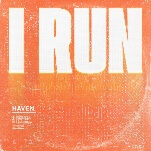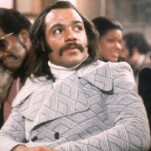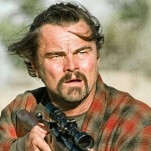Each week, Big Issues focuses on a newly released comic book of significance. This week, it’s The Multiversity: Pax Americana #1. Written by Grant Morrison (All-Star Superman, Batman Incorporated) with art by Frank Quitely (All-Star Superman, Jupiter’s Legacy) and colorist Nathan Fairbairn (Seconds, Batman Incorporated), this issue explores the legacy of Alan Moore’s Watchmen on the modern superhero landscape with a meticulously structured, deconstructionist story about the United States’ role as global peacemaker. (Note: This review reveals major plot points.)
Five years in the making and reuniting the legendary team of Grant Morrison and Frank Quitely, The Multiversity: Pax Americana #1 is a bigger event than any of the crossovers produced by DC or Marvel this year. With this updated take on Watchmen, which uses the Charlton superheroes that inspired Alan Moore’s characters, one of the greatest creative teams of the modern age of superhero comics is diving into the major work of the modern age of superhero comics. As such, expectations are extremely high.
Thankfully, Pax Americana does not try to be Watchmen. Morrison’s story is a much more disorienting read that jumps through time without holding the reader’s hand along the way, and it focuses on a central non-superhero character: U.S. President Harley, who is assassinated in the issue’s gruesome opening sequence by the superhero Peacemaker. That scene unfolds in reverse, the first example of Morrison and Quitely dramatically manipulating time in the story, and it’s the reader’s first exposure to the eight-panel grid that is at the book’s structural foundation.
Watchmen is a marvel of comic-book structure, using a nine-panel grid to dictate the rhythm of the narrative with immense specificity while exploring the storytelling flexibility of that key layout. The structure of Pax Americana isn’t quite as specific, but almost all the pages fall along an eight-panel grid of two rows composed of four tall rectangular panels. Sometimes that grid doubles to 16 panels by splitting the height of the page with four rows, but the layout is still obeying the general borders of the eight-panel grid when that happens.
This creates a top level and a bottom level for most of the pages, with only two exceptions, which both involve stairs. The first occurs after President Harley’s assassination, when the newly appointed commander-in-chief speaks to his daughter, the superhero celebrity Nightshade, about how the concept of the “American superhero” is now dead thanks to Peacekeeper’s actions. He takes her on a walk through a stairwell that switches from an eight-panel grid to a 12-panel grid, allowing Quitely to create a layout that twists through the page as the characters move down the stairs.
They’re literally moving from one level to another, but their conversation is also about moving America in a different direction, one that will rely less on superhero fantasies and more on political transparency. (This is coming from a character that gets to where he is by being corrupt, though, so it’s probably best not to believe what he says.) This new world will be different from what came before, and that change is immediately reflected in the layout, which adds a third row of panels in the middle of the pre-determined eight-panel grid. That third row returns once more in another scene concerning stairs and changing the direction of the country, this time when then-Governor Harley meets with Captain Adam to discuss the rise of superheroes in America’s future. This page doesn’t spotlight the stairs as much as the previous one, but the fact that the only times the book breaks from an eight- or 16-panel are for these paradigm-shifting conversations on stairs suggests that there’s a connection between the physical and mental movement of the characters and the layout of the panels.
The number eight is important for this story. To start, the two conjoined circles of the digit resemble a Möbius strip, a fitting image for Morrison’s cyclical narrative, which begins and ends with Möbius-shaped visuals in the form of the twisting, burning flag at President Harley’s assassination and the domino mask worn by President Harley’s comic-book artist father, who was also the world’s first superhero, Yellowjacket. There are also eight levels of spiral dynamics, the model of human development that The Question outlines when he has a gangster pinned under a fallen billboard. Those levels are categorized by specific colors, and Nathan Fairbairn’s coloring is acutely aware of the concepts those different shades represent.
Circles are a recurring visual motif throughout the issue, reflecting Morrison’s idea that America has found itself in a never-ending cycle of violence by serving as a global peacekeeper. This militaristic aggression has become a major part of real-world American culture, as evidenced by the dramatic rise of Marvel’s superhero characters on the big screen, characters with deep roots in the military-industrial complex. The United States claims to want peace but has a culture rooted in violence, and superheroes are a part of that.
Superhero stories almost always glorify violence, and Pax Americana is guilty of that too. How can it not when it has one of comics’ best fight choreographers as an artist? Quitely draws dynamic action with characters that have a real sense of weight, which accentuates the athleticism of these heroes in action. But superhero violence isn’t the kind of violence that runs rampant in the real world. This story begins and ends with gunshot deaths, the first emphasizing the grisly impact a bullet has on the body of the victim, and the second emphasizing the catastrophic effect it has on the mind of the shooter. After spending time in a heady, dense narrative, the final pages bring everything down to a very personal level, giving readers the last vital piece of information needed to understand the motivations of the story’s central character.
The best thing about Grant Morrison and Frank Quitely’s relationship is that Morrison pushes the artist further than any other writer, and Pax Americana shines a bright light Quitely’s consistently evolving skill as both a draftsman and storyteller. When it comes to meticulous detail, Quitely is hard to top, making moments like a close-up shot of President Harley’s jaw getting shattered by a bullet especially horrific. The texture in Quitely’s artwork gives it an especially tactile quality, and the close-ups of that opening sequence draw heavy attention to the work he puts into making the fabric of a flag look different than the fabric of a suit, or the way he adds highlights to blood that create the illusion of motion by showing how the liquid reacts to light around it.
That texture is amplified by Nathan Fairbairn’s intricate coloring; Quitely draws the wrinkles on President Harley’s finger, and then Fairbairn goes in with his flesh tones to show how lights bounces off those small bumps in the flesh. There’s just so much detail in every panel, which further grounds the artwork in a more realistic environment. Fairbairn’s coloring also plays an important role in regards to storytelling clarity, particularly during the sequence where The Question investigates the murder of scientist Nora O’Rourke. A double-page spread showing the main floor of the Pax Institute is broken up into 32 panels, which are each dedicated to one of three scenes: a daytime conversation between Nora and Peacemaker, the night of Nora’s murder, and The Question’s investigation of the crime scene. The characters move through the same space, but the time jumps between panels, and Fairbairn’s coloring helps the viewer keep track of those temporal shifts.
Like any given chapter of Watchmen, Pax Americana’s cover is a close-up shot of the first interior panel, which is in this case a burning flag bearing the peace sign. But there’s a design element to the cover that brilliant plays into the book’s critique of the superhero industry. The outline of the peace sign creates the shape of a D, and the orange bar behind the title cuts through the curve of the letter to create the impression of a C. That is essentially DC’s current logo resting inside a burning peace sign, tying the cover in to the idea that the work of superhero publishers like DC and Marvel is a direct product of the American mindset of violence and aggression.
Morrison’s The Multiversity has been an immensely entertaining miniseries, giving him the opportunity to explore different elements of superhero comics through stylized one-shots set on different worlds in DC’s multiverse. Like his former DC miniseries Seven Soldiers, The Multiversity shows off Morrison’s skill for developing fresh superhero concepts: The Society Of Superheroes embraced the pulp legacy of DC Comics for a rousing action-adventure tale with clean retro-styled art by Chris Sprouse, and The Just put a modern celebrity spin on legacy heroes, bringing a sense of glamour that was accentuated by Ben Oliver’s sleek, sexy artwork.
The work done in those two one-shots feels like the start of something more. There are so many ideas in play, and someone should build off of those concepts, even if it’s not Morrison. (It’s the same feeling one gets after finishing the individual Seven Soldiers miniseries.) Morrison could do very well in a creative editorial position, developing ideas that he introduces into the marketplace, then hand-picking the creative teams to keep those concepts going.
Pax Americana is different than those previous one-shots, though. It’s more self-contained, and while there’s plenty of material that could be further developed, there’s an open-and-shut quality to this narrative. That’s probably because it focuses on one man’s development from childhood to death, which gives the story a sense of finality. This is a one-of-a-kind event, and there’s an outstanding level of ambition on display here in every aspect. Morrison, Quitely, and Fairbairn think big with this project, and the result is one of the year’s most sophisticated superhero reads.








































